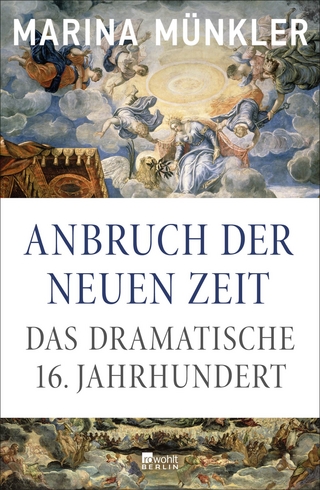
The Oxford Handbook of Silent Cinema
Oxford University Press Inc (Verlag)
978-0-19-049669-2 (ISBN)
The historiographical essays in this collection engage with the question of how we might rethink silent film history, especially in the context of the developed media ecosystem that defined the early 1900s. Influenced by methodologies as diverse as media archaeology and industrial studies, and sensitive to both the textual contours of silent films and the cultural, economic, and ideological currents that helped shape them, the Oxford Handbook of Silent Cinema invites its reader to envision its object in expansive terms that incorporate the propulsive energy of the first decades of the 1900s and deploy the analytical frameworks of the current day.
Charlie Keil is a professor in the Cinema Studies Institute and the Department of History at the University of Toronto, where he also serves as Principal of Innis College. He has published seven books, the majority focusing on early and silent cinema, with an emphasis on the transitional era of American cinema. He is currently working on a study of the origins of Hollywood, both as a filmmaking center and a concept, co-authored with Denise McKenna. Rob King is a professor at Columbia University's School of the Arts. He is the author of Hokum! The Early Sound Slapstick Short and Depression-Era Mass Culture and the award-winning The Fun Factory: The Keystone Film Company and the Emergence of Mass Culture. He has also edited or coedited the volumes Cornell Woolrich and Transmedial Noir, Beyond the Screen: Institutions, Networks, and Publics of Early Cinema, Slapstick Comedy, and Early Cinema and the "National." King is currently working on a monograph on the adult filmmaker Radley Metzger.
1. Rob King and Charlie Keil, "Introduction: The History of the History of Silent Film"
I. Origins: From Invention to Medium
2. Tom Gunning, "The Invention of Cinema"
3. Doron Galili, "Early Cinema and the Emergence of Television: An Archaeology of Intertwined Media"
4. Stefan Andriopoulos, "The Right to One's Own Image: Animism, The Student of Prague, and Legal Doctrine"
5. Jane Gaines, "Copying Technologies: Two Pirates, Two Centuries"
II. Intermediality: Genre and Aesthetics in Silent Film
6. André Gaudreault and Philippe Marion, "The Unfinished Business of History: Defense and Illustration of the Concept 'Cultural Series'"
7. Daisuke Miyao, "Reviewing Maple Viewing (Momijigari, 1899)"
8. Allyson Nadia Field, "African-American Film History Beyond Cinema: William Foster and the Legacy of Black Theatrical Comedy"
9. Weihong Bao, "Picture, Shadow, Play: Ontology, Archaeology, Ecology"
10. Rob King, "Biograph 1904: The Invention of Chase Comedy"
11. Miriam Siegel, "Storied Spaces: Staging and Editing in Early American Feature Films"
12. Tom Paulus, "Salon Tango: Hollywood Pictorialism and the Beaux-Arts Tradition"
13. Tami Williams, "Symbolist Impressions: Modern Theater, Germaine Dulac, and the Making of an Art Cinema in Belle Époque France (or, the False Ideal of the Cinema against Theater)"
III. Pedagogical Formations: Nontheatrical Cinema and the Uses of Film
14. Greg Waller, "Popular Science Monthly and the Uses of Moving Pictures"
15. Scott Curtis and Oliver Gaycken, "Cinema and Science in the Silent Era"
16. Alison Griffiths, "Cinema on the Move: Museum-Sponsored Expedition Film in the Silent Era"
17. Jennifer Horne, "Babies and Brochures: Public Service Pamphlet Films of the US Children's Bureau (1919-1926)"
18. Shelley Stamp, "Curiosity Seekers, Morbid Minds, and Embarrassed Young Ladies: Female Audiences and Reproductive Politics Onscreen"
IV. Hollywood, Inc.: The Institutions of Mass Culture
19. Charlie Keil and Denise McKenna, "Unlikely Allies: Crafting Hollywood as Institution and Invention"
20. Luci Marzola, "A System of Thorough Co-Operation: Technology, Service, and the Film Labs of Hollywood"
21. Ross Melnick, "A Prologue to Hollywood: Sid Graumann, Film Premieres, and the (Real Estate) Development of Hollywood"
22. Derek Long, "Franchising as a Strategy of National Feature Distribution in the 1910s: The Case of the Triangle Film Corporation"
23. Paul S. Moore, "Paramount Pictures, National Advertising Agencies, and the Conspicuous Distribution of First-Run Feature Films in the United States"
V. Nation, Empire, World: The Spaces and Times of Modernity
24. Giorgio Bertellini, "Going Silent on Modernity: Periodization, Geopolitics, and Public Opinion"
25. Lee Grieveson, "Empire/State/Media"
26. Kaveh Askari, "Dandyism, Circulation, and Emergent Cinema in Iran: The Powers of Asynchrony"
27. Jennifer Peterson, "The Covered Wagon: Location Shooting and Settler Melodrama"
28. Anne Bachmann, "Scandinavian Cinema, Location, and the Discourse of Quality in 1920"
29. Ruth Mayer, "Running Late: The Silent Serial, the Cliffhanger, and the Exigencies of Time, 1914-1920"
VI. Cinematic Publics: Critics, Fans, Communities
30. Johannes von Moltke, "The Silent Film Criticism of Siegfried Kracauer"
31. Sumiko Higashi, "The Decline of Middlebrow Taste in Celebrity Culture: The First Fan Magazines"
32. Laura Horak, "The Many Genders and Sexualities of American and European Silent Cinema"
33. Breixo Viejo, "Art, Anti-Art, and Poetic Cinema: Revisiting Un Chien andalou (Luis Buñuel, 1929)"
34. Donna Kornhaber, "Coda: Silent Film after Sound"
Index
| Erscheinungsdatum | 05.09.2023 |
|---|---|
| Reihe/Serie | Oxford Handbooks |
| Zusatzinfo | 120 |
| Verlagsort | New York |
| Sprache | englisch |
| Maße | 241 x 175 mm |
| Gewicht | 1451 g |
| Themenwelt | Kunst / Musik / Theater ► Film / TV |
| Geschichte ► Allgemeine Geschichte ► Neuzeit (bis 1918) | |
| ISBN-10 | 0-19-049669-X / 019049669X |
| ISBN-13 | 978-0-19-049669-2 / 9780190496692 |
| Zustand | Neuware |
| Informationen gemäß Produktsicherheitsverordnung (GPSR) | |
| Haben Sie eine Frage zum Produkt? |
aus dem Bereich


